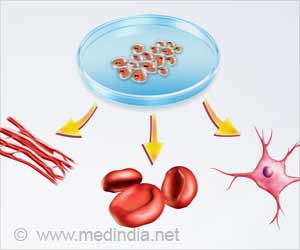Spider silk proteins fused to biologically active proteins are converted into a gel at body temperature. The spider silk gel could be used in tissue engineering.

‘A specific part of the spider silk protein called the N-terminal domain is produced in large quantities and can keep other proteins soluble, and we can exploit this for medical applications.’





Advertisement
An Injectable Protein Solution
In the future, the researchers hope to develop an injectable protein solution that forms a gel inside the body. The ability to design hydrogels with specific functions opens up for a range of possible applications. Such a gel could, for example, be used to achieve a controlled release of drugs into the body. In the chemical industry, it could be fused to enzymes, a form of proteins used to speed up various chemical processes.“In the slightly longer term, I think injectable gels can become very useful in regenerative medicine,” says the study’s first author Tina Arndt, PhD student in Anna Rising’s research group at Karolinska Institutet. “We have a long way to go, but the fact that the protein solution quickly forms a gel at body temperature and that the spider silk has been shown to be well tolerated by the body is promising.”
Advertisement
Mimics Spider Silk Spinning
The ability of spiders to spin incredibly strong fibers from a silk protein solution in fractions of a second has sparked an interest in the underlying molecular mechanisms. The researchers at KI and SLU have been particularly interested in the spiders’ ability to keep proteins soluble so that they do not clump together before the spinning of the spider silk. They have previously developed a method for the production of valuable proteins which mimics the process the spider uses to produce and store its silk proteins.“We have let bacteria produce this part of the protein linked to functional proteins, including various drugs and enzymes.”
Advertisement
Transformed into a Gel
The new study shows that the N-terminal domain also has the ability to change shape and transition to small fibrils that cause the protein solution to be converted into a gel if incubated at 37 °C. In addition, it can be fused to functional proteins that preserve their function in the gel.The research was funded by the European Research Council (ERC), the Centre for Innovative Medicine (CIMED) at Karolinska Institutet and Region Stockholm, the Strategic Research Area of Stem Cells and Regenerative Medicine at Karolinska Institutet, the Swedish Research Council, the European Regional Development Fund and the Novo Nordisk Foundation. The study was also conducted using the core facility Biomedicum Imaging Core (BIC) at Karolinska Institutet. The researchers state that there are no conflicts of interest.
Source-Eurekalert











